Sourdough Rye Bread
on Oct 17, 2024, Updated Nov 13, 2024
This post may contain affiliate links. Please read our disclosure policy.
If you’re looking for a rich, flavorful bread with an earthy tang, sourdough rye bread is the perfect choice. This bread brings together the deep flavor of rye, the heartiness of whole wheat, and the tangy character of a well-developed sourdough starter.
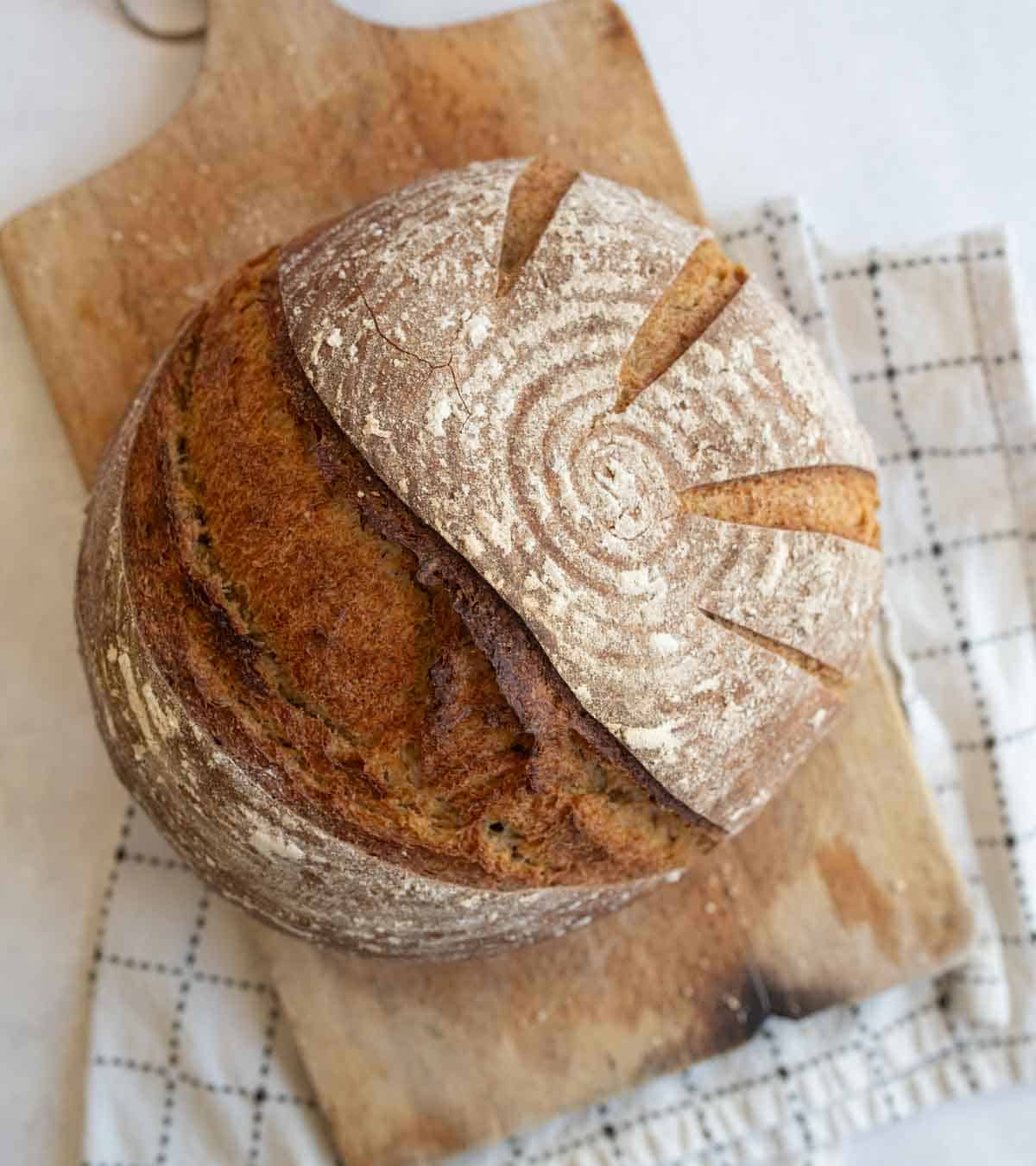
Despite its artisanal quality, this bread is surprisingly easy to make with simple ingredients, making it accessible to all home bakers. Its versatility shines through as it pairs wonderfully with a variety of foods, from deli meats in sandwiches to accompaniments for soups and stews.
While the sourdough process may seem daunting, it’s quite manageable and can be a wonderful opportunity to involve your children in the kitchen. And, like with all breads, the smell that fills the air while it’s baking is always a great way to make your home feel instantly cozy!
🍞🥖 New to sourdough? Find out how to make your own sourdough starter here, find my most popular and basic bread recipe here, and search the sourdough archive here.
Table of Contents
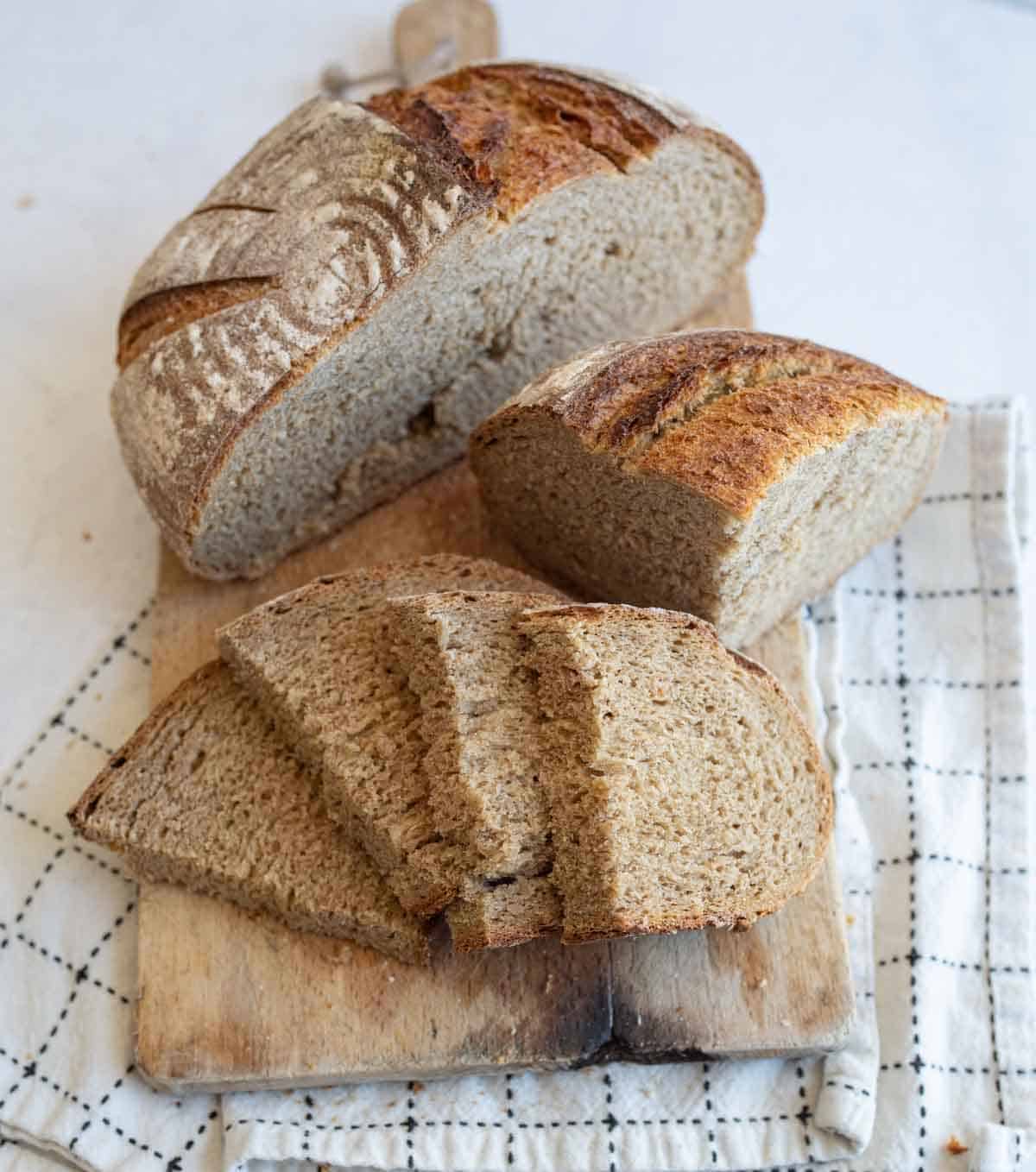
Why You’ll Love This Recipe
- Complex Flavor: The combination of rye, whole wheat, and sourdough starter creates a deeply flavorful, hearty loaf.
- Perfect for Sandwiches: Sourdough rye is sturdy enough to hold up to any sandwich fillings, from a turkey club sandwich to roasted veggie sammies.
- Natural Ingredients: No commercial yeast here—this recipe relies entirely on your sourdough starter to rise, resulting in a delicious and easier-to-digest bread.
- A Fun Challenge: Whole-grain sourdough loaves are a bit different than an all-white flour loaf, so this will be a great chance to try your hand at something new.
Recipe Ingredients
- Sourdough starter
- Rye flour
- Whole wheat flour
- Bread flour
- Salt
- Molasses
- Caraway seeds, optional
See the recipe card below for full information on ingredients and quantities.
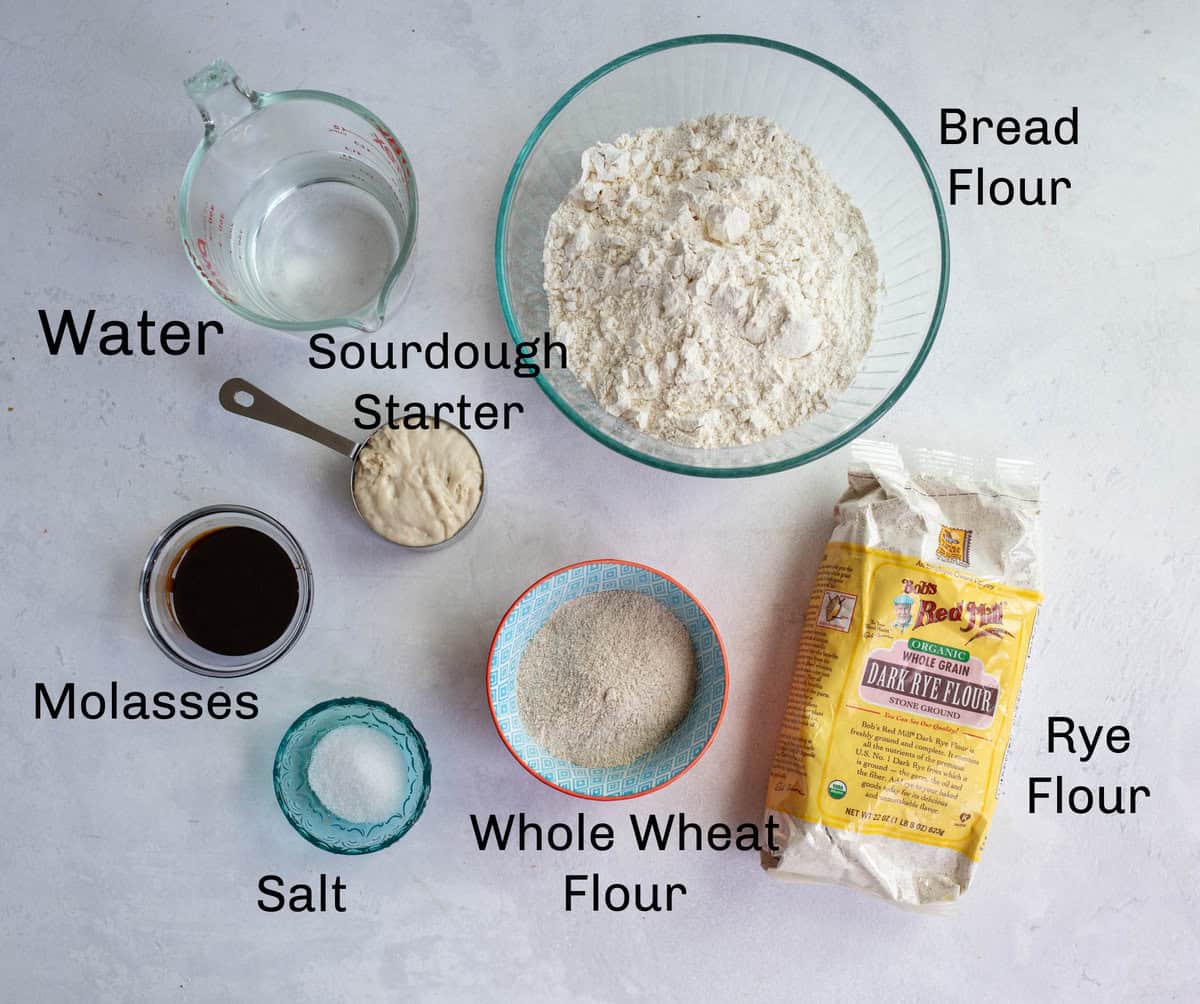
How to Make Sourdough Rye Bread
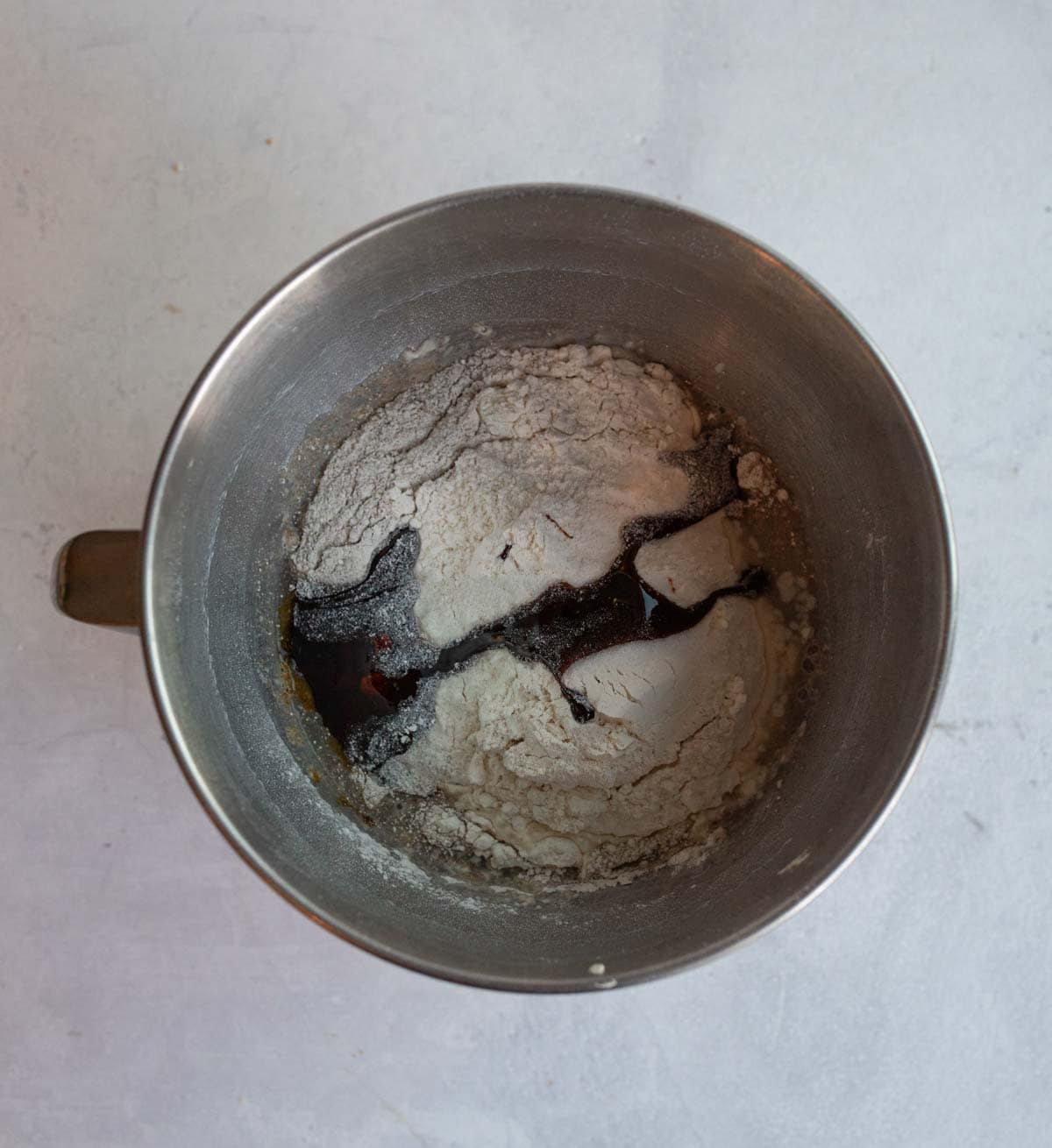
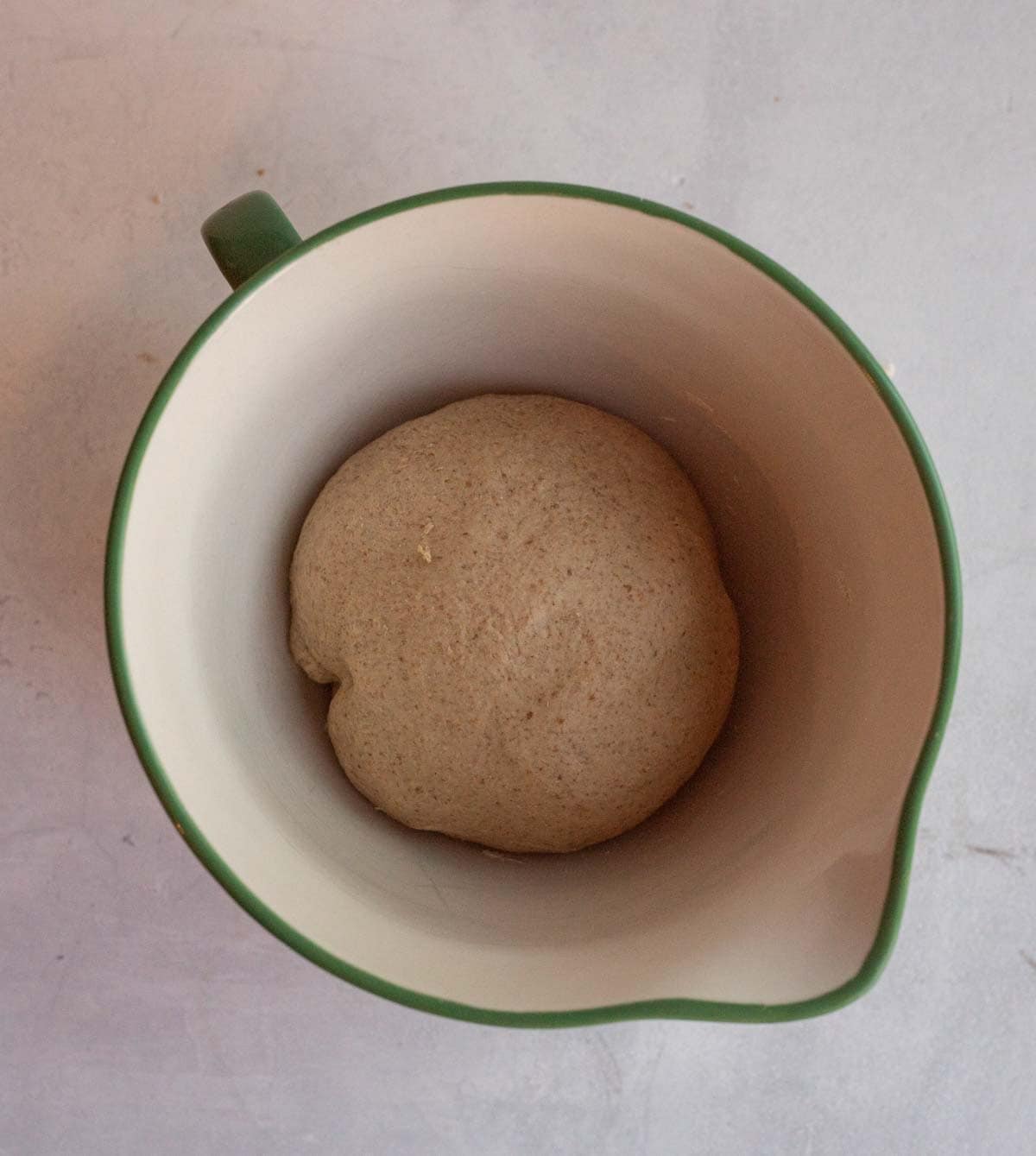
Step 1: When the starter is active, combine it with the water. Add the rest of the ingredients following the recipe card. Mix well to combine and knead until soft.
Step 2: Cover the dough with a damp towel, plastic wrap, or beeswax wrap and allow it to bulk-ferment at room temperature until doubled in size, about 12 to 18 hours.
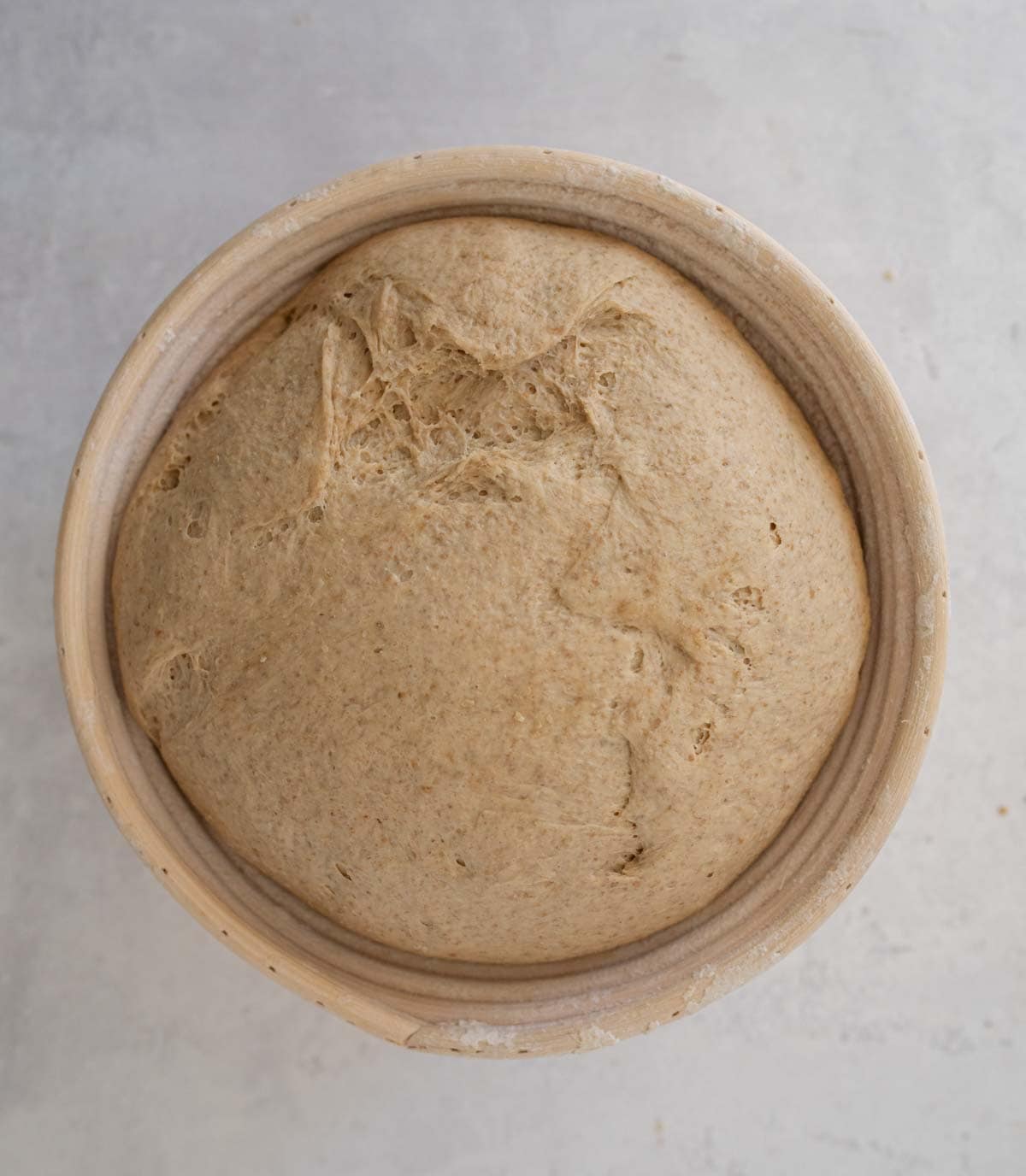
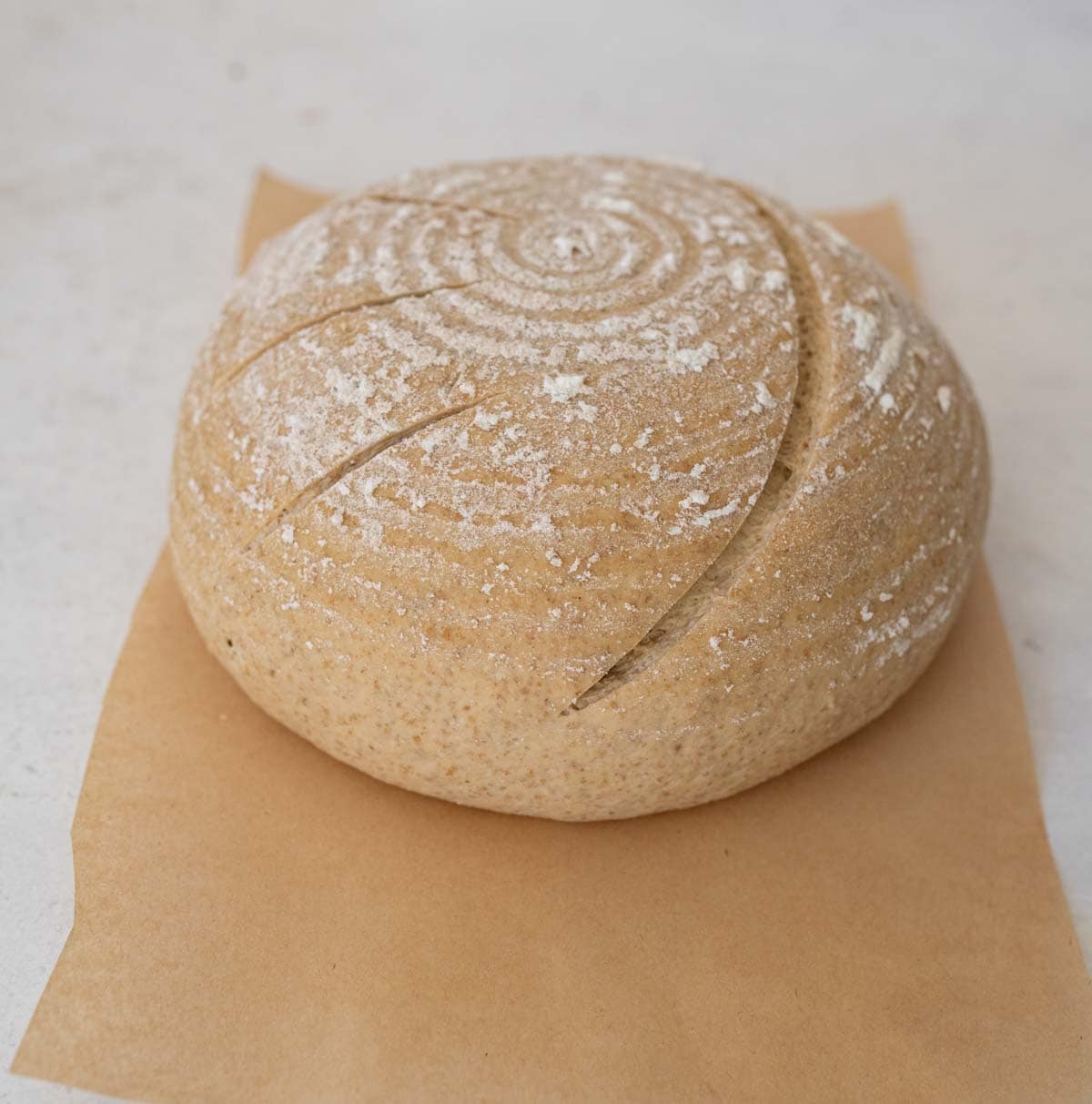
Step 3: Cover the dough with a damp towel, plastic wrap, or beeswax wrap and allow it to bulk-ferment at room temperature until doubled in size.
Step 4: Turn the dough out onto parchment paper and score the top. Place in Dutch oven and cover with the lid.
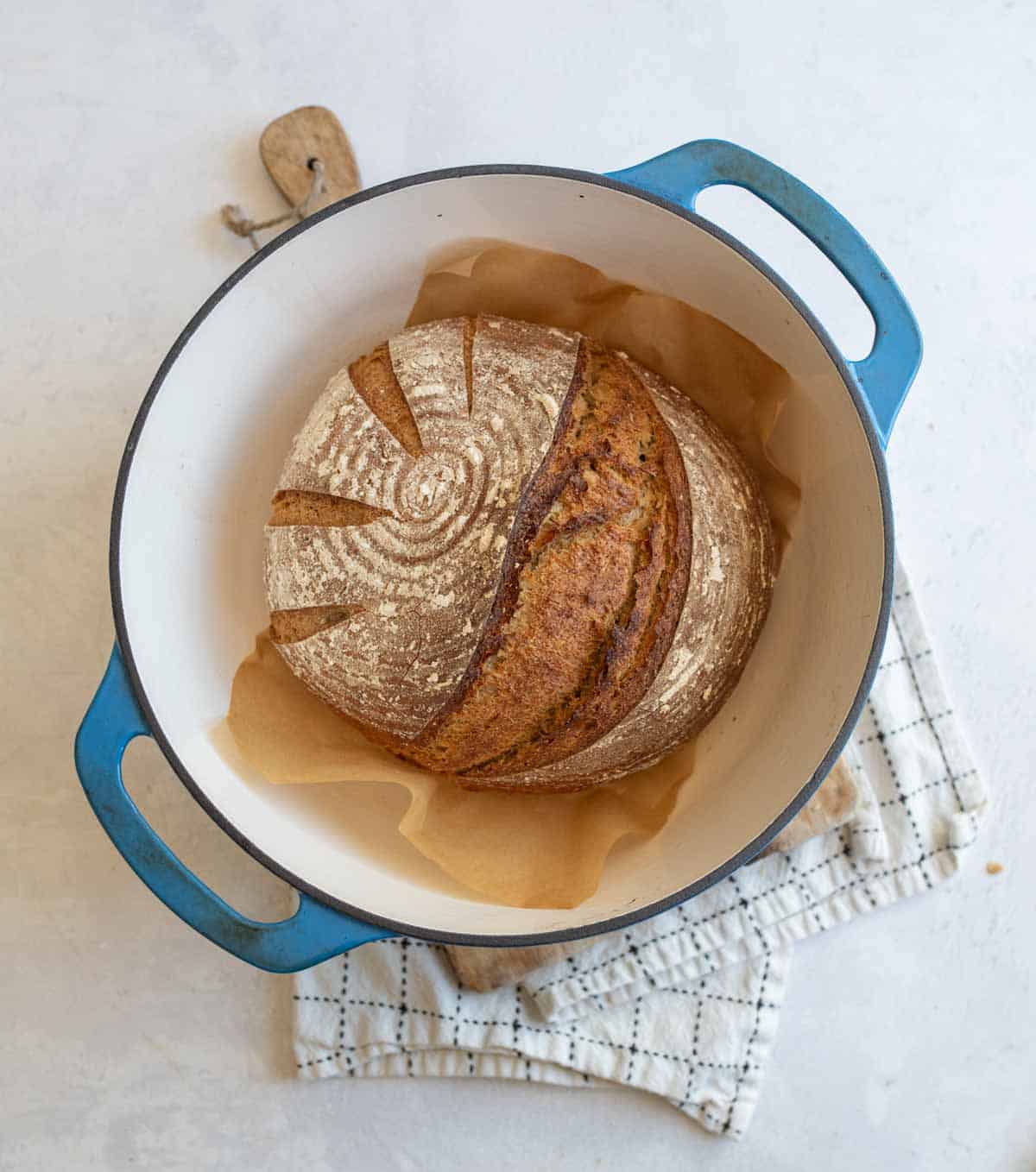
Step 5: Place in the hot oven and cook for 40 minutes. Remove the lid and bake uncovered for another 10-15 minutes.
Recipe FAQs
Yes! If you don’t have a Dutch oven, you can bake the bread on a baking sheet. Just be sure to add steam to the oven by placing a pan of water on the bottom rack to help create a crispy crust.
You can substitute additional whole wheat flour or bread flour if you don’t have rye flour on hand. However, using rye flour gives this bread its signature earthy flavor, so it’s worth seeking out.
Once cooled, store your sourdough rye bread in an airtight container at room temperature for up to three days. You can also freeze the loaf for longer storage.
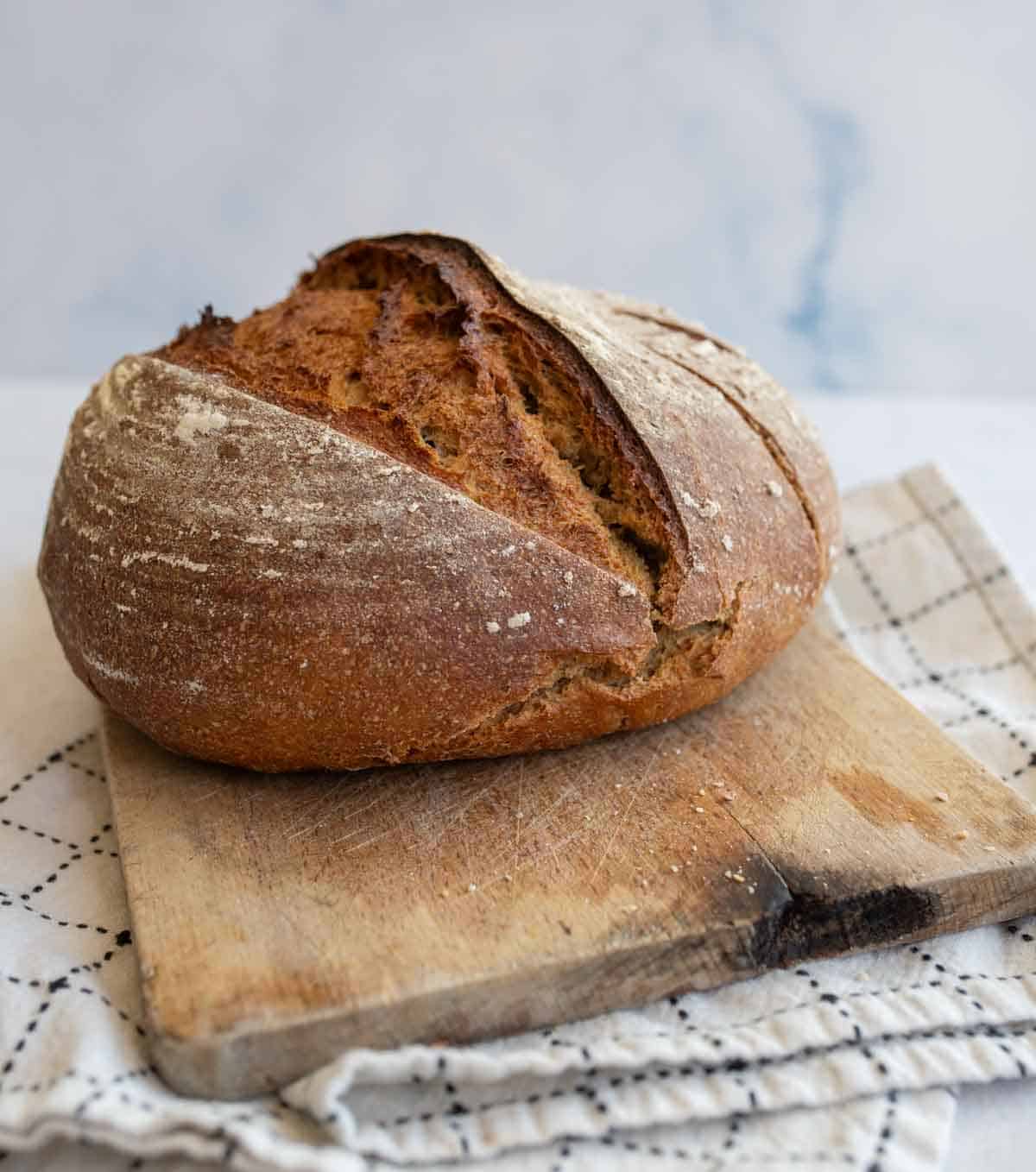
Expert Tips
- Active Sourdough Starter: Make sure your sourdough starter is active and bubbly before mixing the dough. Feed it 4-12 hours before starting.
- Don’t Rush Fermentation: Rye bread benefits from a long fermentation process, which allows the flavors to fully develop. You can let this dough rest at room temperature for 12-18 hours depending on your schedule.
- Scoring the Dough: Scoring the dough with a razor allows the bread to expand in the oven. To create a beautiful contrast with the baked crust, you can also dust the top with flour before scoring.
- Flour Tips: Bread flour adds extra gluten to this recipe and helps to support the whole wheat flour. It makes the bread soft and fluffy while still including whole grains. If you use an all-purpose flour, you’ll end up with a flatter, denser loaf that is still delicious.
- Pro Preheat Tip! You can preheat your Dutch oven in the oven while the oven is heating up if you want to before putting in the dough. I often do, but you don’t have to. If you are comfortable moving hot, heavy pans, you can; if you don’t want to, it’s okay not to.
Other Sourdough Breads To Try
These are some of my other dare-I-say amazing sourdough recipes that have become family favorites!
- Sourdough Cinnamon Swirl Bread – A Perfect Breakfast Loaf
- No Knead Sourdough Bread {Easy Beginner’s Recipe}
- Soft Sandwich Loaf Sourdough Bread
- Fluffy Sourdough Rolls
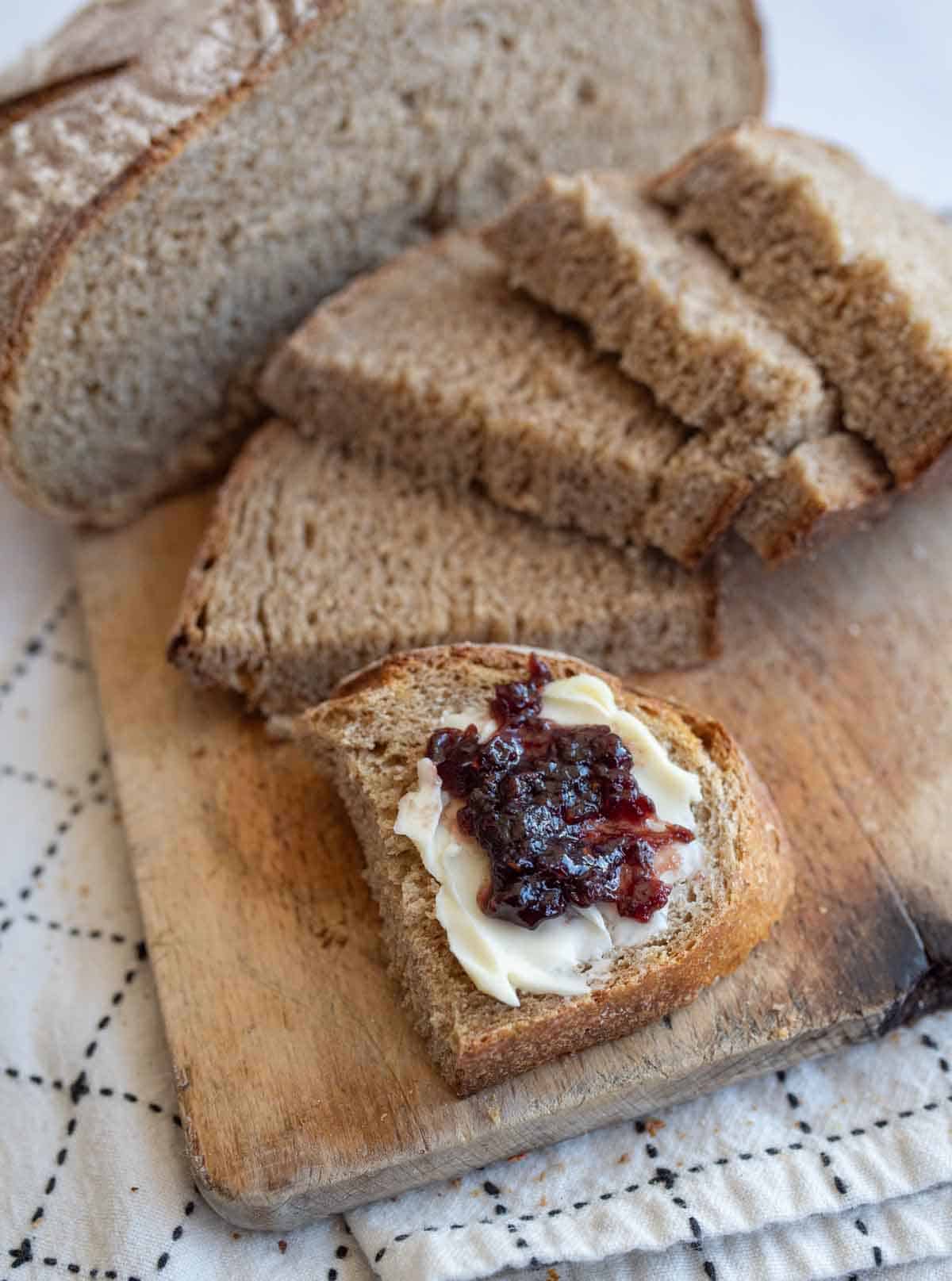
More Sourdough Recipes to Consider
Sourdough Recipes
Sourdough Cinnamon Swirl Bread – A Perfect Breakfast Loaf
Sourdough Recipes
No Knead Sourdough Bread {Easy Beginner’s Recipe}
Sourdough Recipes
How to Feed a Sourdough Starter: Prepping for Perfect Loaves
Sourdough Recipes
Soft & Fluffy Sourdough Challah Bread
Did you make this recipe? Leave a ⭐️ review and share it on Instagram, Facebook, or Pinterest!
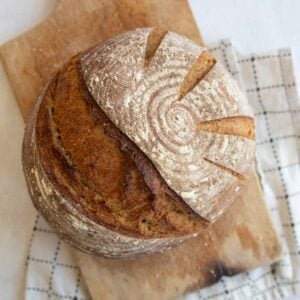
Sourdough Rye Bread
Ingredients
- 1 1/4 cups water, (300 grams)
- 1 cup sourdough starter, (200 grams)
- 1 cup rye flour, (140 grams)
- 1/4 cup whole wheat flour, (35 grams)
- 2 cups bread flour + ½ cup if needed, (270 grams + up to an additional 70 grams)
- 1 1/2 teaspoons salt, (9 grams)
- 1 tablespoon molasses, (21 grams)
- 2 teaspoons caraway seeds, optional
Instructions
Prepare the sourdough starter:
- Feed your sourdough starter 4-12 hours before making the dough to ensure it is active and bubbly.
Mix the dough:
- In the bowl of your stand mixer, combine the water and sourdough starter. Add the rye flour, whole wheat flour, 2 cups of the bread flour (reserving the remaining ½ cup), salt, molasses, and caraway seeds (if using). Turn the mixer on low and mix well to combine.
- Continue to mix on low to medium-low speed for 5 minutes.
- After 5 minutes, add the additional remaining bread flour, 1 tablespoon at a time, until the dough is soft but not sticky. Only add flour as needed; you may not need it all.
- Mix in the stand mixer for an additional 3 to 5 minutes until a smooth and elastic dough comes together.
Bulk fermentation:
- Remove the dough from the bowl of your stand mixer and put it in a heavy ceramic or glass bowl. Cover the dough with a damp towel, plastic wrap, or beeswax wrap and allow it to bulk-ferment at room temperature until doubled in size, about 12 to 18 hours.
Shape the dough:
- Gently remove the dough from the bowl. Using your hands, gently pull the dough ball towards you, letting its grip on the counter pull it into a tighter ball. Rotate the dough slightly and repeat around the edges until you’ve formed a tight ball.
- Prepare a bread-proofing basket by dusting it well with flour (if it’s new, you’ll need to season it by spraying it with a little water and then adding the flour so it sticks), or use a medium mixing bowl (about 8 inches across). To prepare the mixing bowl, you’ll want to coat it generously with cooking spray and then flour very well, or you can line it with a kitchen towel and dust it very well with flour.
- Place your dough ball, smooth top down, into your prepared basket or bowl, and cover with a damp towel.
Proof the dough:
- Let the dough rest for 1 to 4 hours at room temperature or until it’s spread out a bit and looks puffy.
- Preheat the oven to 450 degrees F.
Score and bake:
- Gently turn your bread dough onto a piece of parchment paper. (I like to put my parchment paper on top of a thin cutting board, put the paper and board on top of my bread basket, and turn it over gently).
- Remove the dough from the bowl. Score the top with a lame or sharp knife.
- Use the corners of the parchment paper to lift the dough into your Dutch oven. Place the lid on the Dutch oven.
- Place the Dutch oven in the hot oven and cook for 40 minutes.
- Remove the lid and put the Dutch oven back in the oven, uncovered, for another 10-15 minutes.
- The bread will be dark and sound hollow when tapped when it is done.
Cool:
- Remove the pan from the oven, remove the bread from the pan, and let it cool on a wire rack for 1 hour before slicing and serving.
- Sourdough bread is best eaten the day of, though leftovers make great toast or grilled sandwiches.
Notes
- Molasses adds a slight sweetness and depth to the rye bread, balancing out the earthy flavor of the rye flour.
- Optional but highly recommended! Caraway seeds add a classic rye flavor that enhances the overall taste of the bread.
- If your home is cooler, allow more time for bulk fermentation. In warmer homes, the process will be faster. The rising times can also be adjusted to fit your schedule. Make the sourdough work for you and not the other way around.
- You can replace the whole wheat flour with additional rye flour if you’d like.

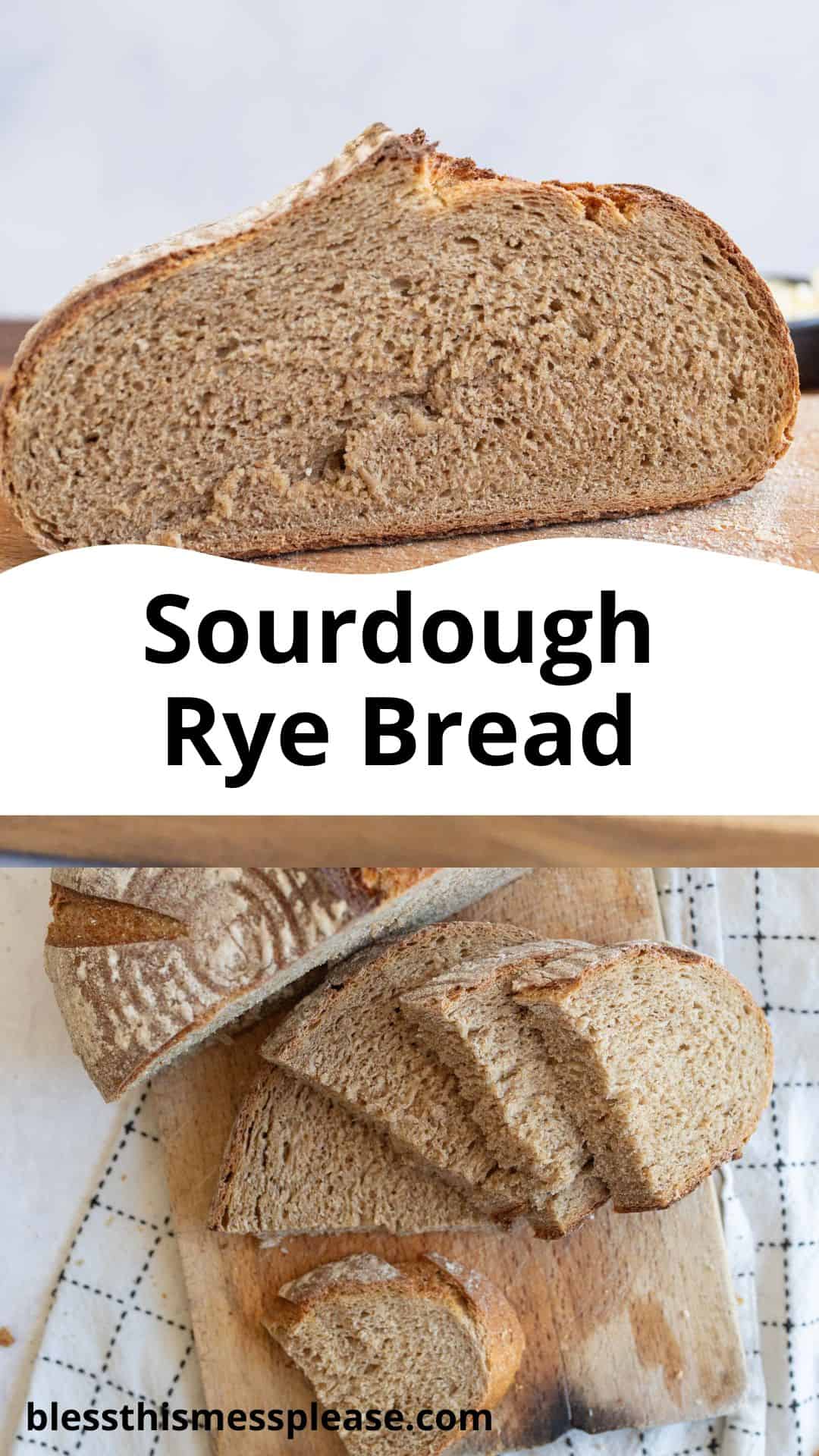
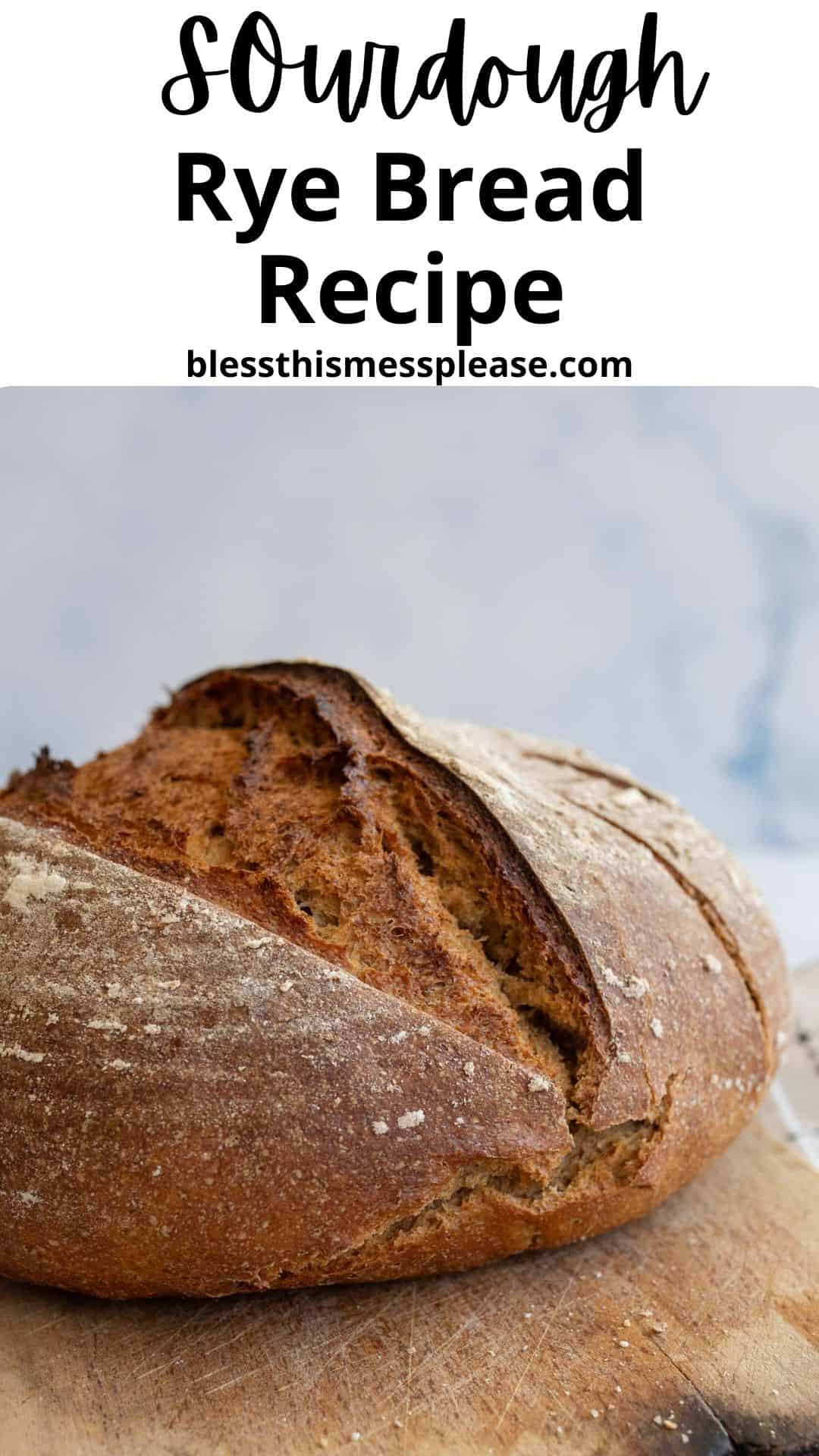

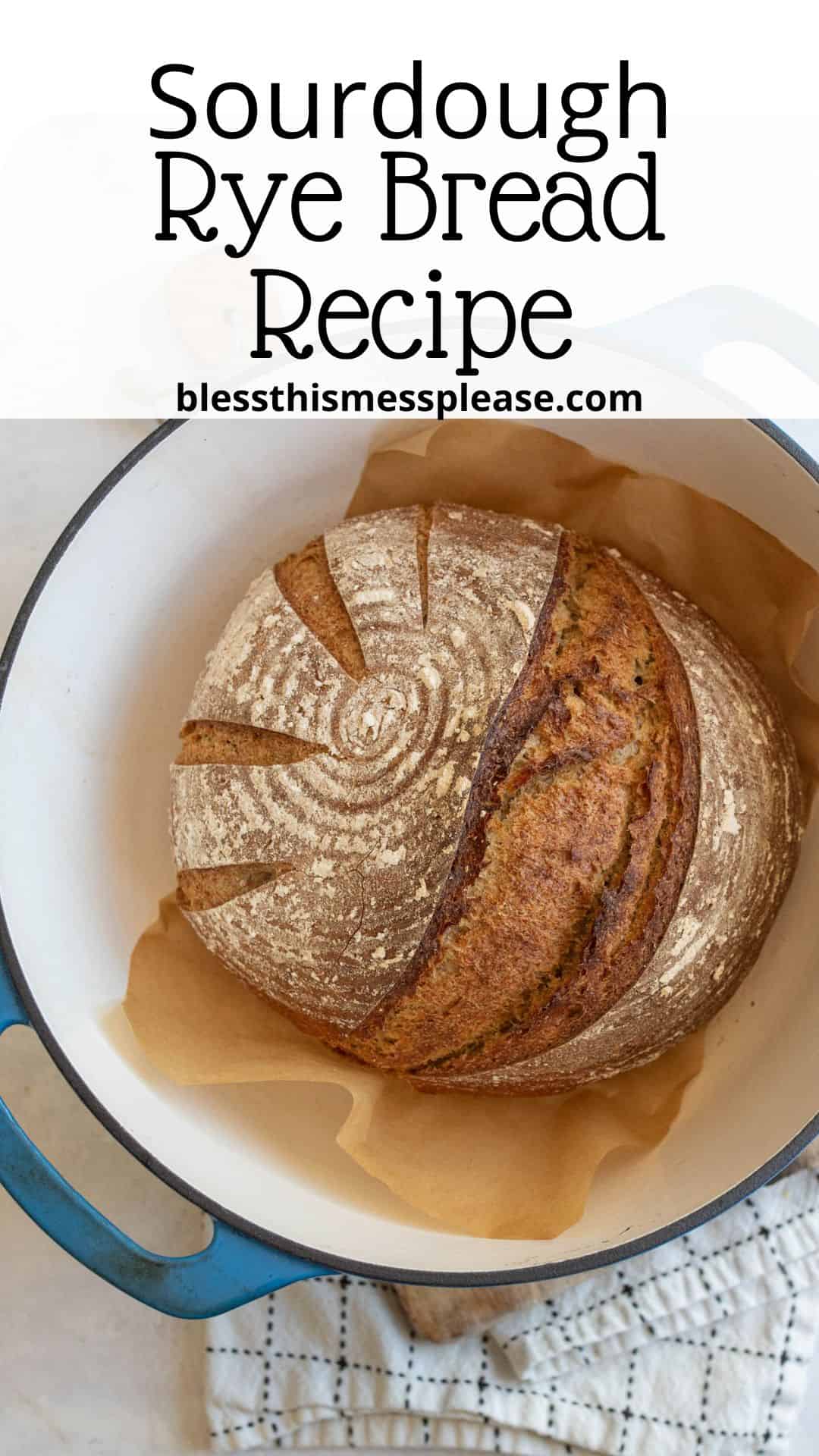
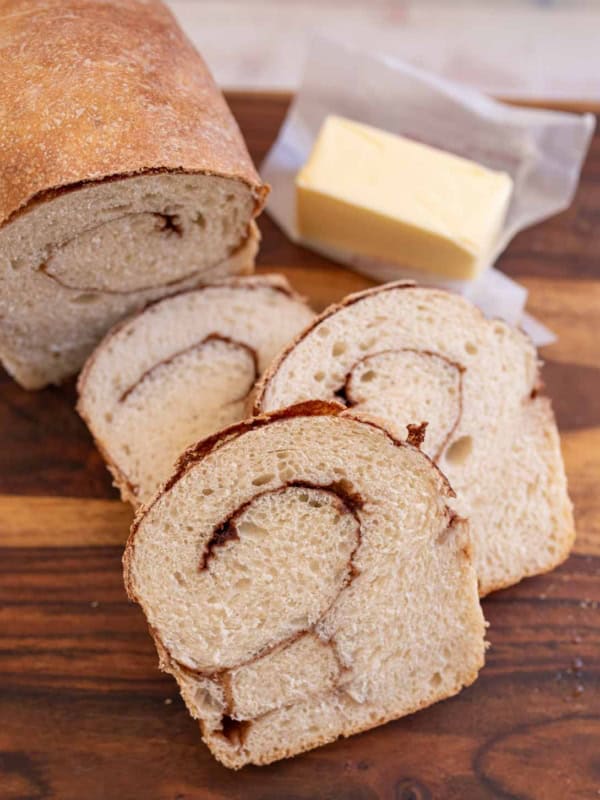
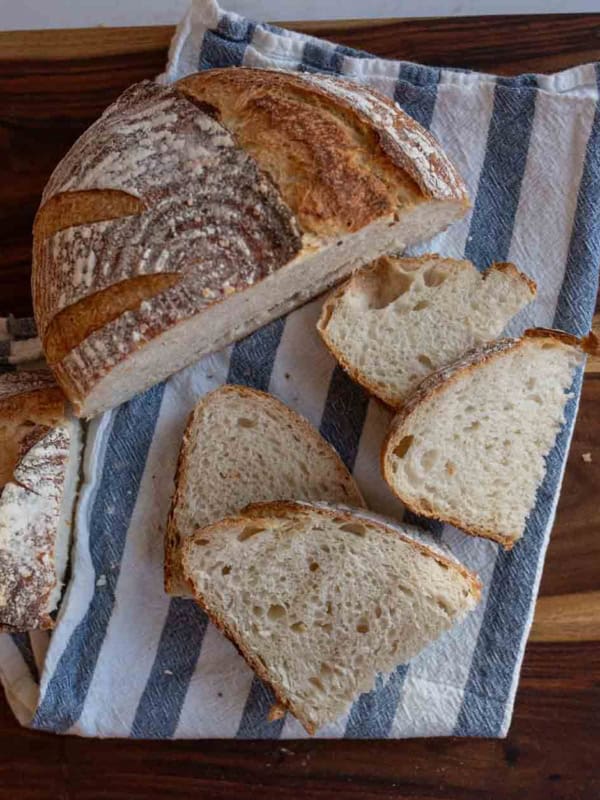
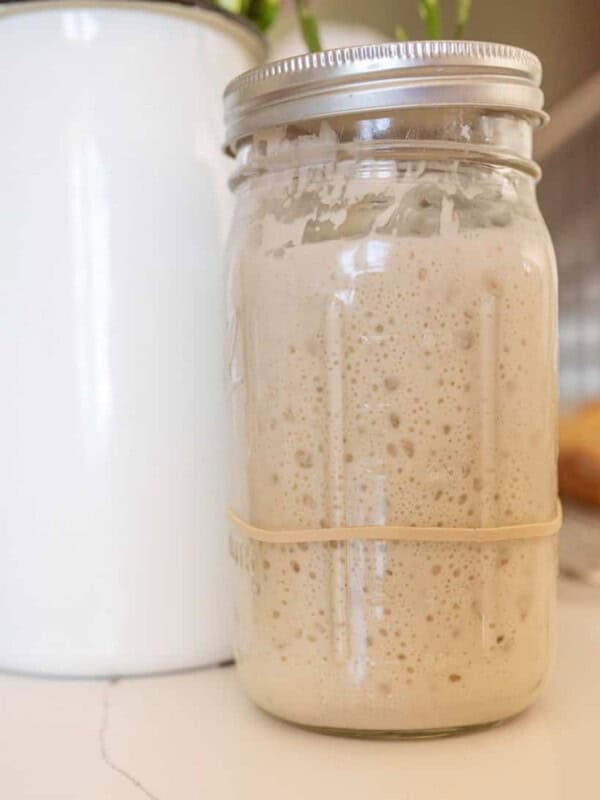
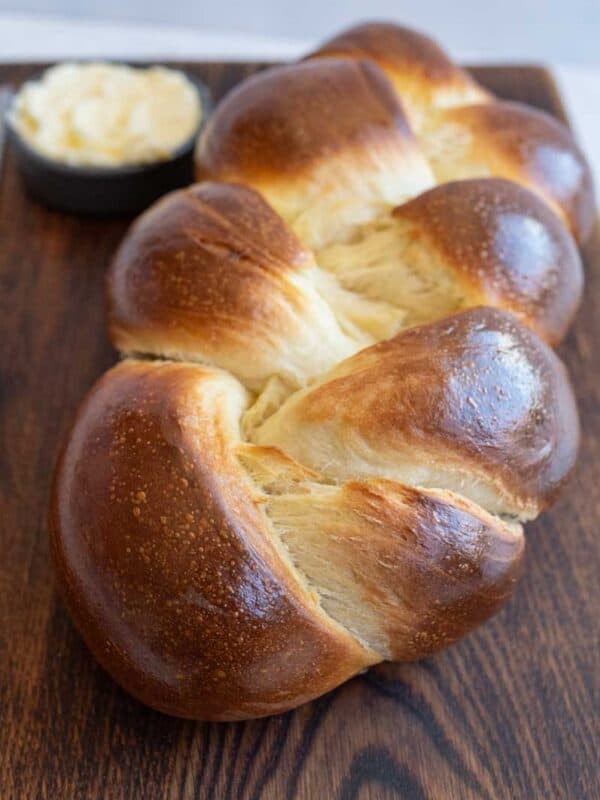






I do not have molasses. is it okay to leave it out?
Yes, or you can use a little honey!